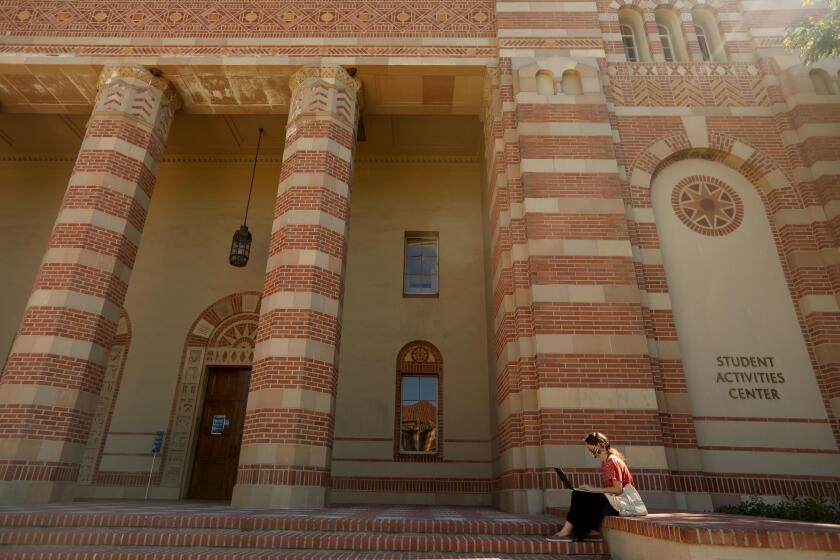Why L.A. Unified’s graduation rate is expected to soar this year
- Share via
The beleaguered Los Angeles Board of Education had that rare moment Tuesday when it could celebrate good news that verged on the spectacular: The nation’s second-largest school system seems headed for a record graduation rate despite more rigorous standards and despite fears — as recently as last week — that half of students would not make it into their caps and gowns.
Although this turnaround has raised eyebrows among outside observers, it was welcome balm at the school board meeting for officials accustomed to catcalls for the ills of the long-struggling school district.
Board member Ref Rodriguez was “thrilled.”
“I’m encouraged,” said George McKenna. “I’m really enthusiastically encouraged.”
The projected graduation rate could rise as high as 80%, compared with last year’s 74%, those presenting the update said.
“We’re shooting for the stars,” said Supt. Michelle King.
Doubts were few.
Monica Ratliff voiced hers almost as an afterthought, and only because McKenna, who chaired the meeting, asked her if she had anything to say before he gaveled it to a close.
“I love the progress that has been made,” Ratliff began. But “are these credit recovery courses really rigorous [college-preparation] courses? How do we know? What is our evidence? How do we make sure the … diploma is the same for everyone?”
Chief Academic Officer Frances Gipson stopped just short of saying that the academic rigor was completely undiluted. In an interview after the meeting, she noted that these efforts to get foundering students quickly back on course through online classes and other means are overseen by L.A. Unified teachers.
“It’s still L.A. Unified teachers working with L.A. Unified students,” she said.
In other words, the standards should be comparable to those of the teachers who flunked these same students in required classes not so long ago.
Former school board member David Tokofsky saluted the urgency but questioned how much students were learning as they crammed to make up course credits.
“Credit recovery is not content recovery,” said Tokofsky, who coached a championship academic decathlon team at Marshall High School.
The potential crisis was years in the making.
In 2005 district officials, under pressure from community groups, decided that all students, starting with the class of 2016, would have to pass the courses needed to qualify for a four-year state college. To be eligible to apply, students also would have to earn at least a C in each class.
But students were not hitting those marks. And last year, the school board lowered the standard to a D for the college-prep classes. About half of students weren’t hitting this target either as recently as December.
Instead of backing down from the requirements, district educators from the top down began what Gipson likened to “emergency-room” triage.
At Tuesday’s meeting, Gipson and other senior administrators went through a long list of efforts being made, including having emissaries from district offices travel to each school to ask about individual students and what special programs they are taking part in.
Online classes were a key part of the formula. They require at least 60 hours of seat time — and passing unit tests — to get credit for a semester of work, Gipson said.
Schools had varying approaches. Verdugo Hills High School was allowing students to finish course work on computers at home but noticed that some students were getting stuck at night. So the school assigned a teacher to work evenings, someone who could be contacted for help.
Another novel method at many schools is negotiating a contract with a teacher to change a student’s grade, from an F to D — if the student takes on additional work that would have resulted in a D had the student done the job the first time.
Board President Steve Zimmer said he’s concerned that students who are back on track could still slip off again before June. And he wants to be sure the district sticks with students who have no hope of a June ceremony.
But he, too, was pleased.
“It’s evident we’re changing the way we work,” he said. “And that’s really positive for the families that need us the most.”
Twitter: @howardblume
More to Read
Sign up for Essential California
The most important California stories and recommendations in your inbox every morning.
You may occasionally receive promotional content from the Los Angeles Times.











